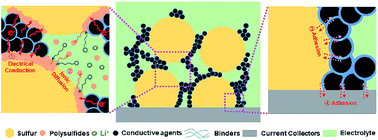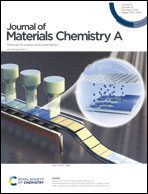Interfacial design of thick sulfur cathodes to achieve high energy density and stability
Abstract
The lithium–sulfur battery (LSB) attracts significant attention to meet the ever-growing energy demand for future technology because of the high theoretical specific capacity of sulfur. To achieve the goal of 500 W h kg−1, the fabrication of thick sulfur cathodes is critical. The ensuing interfacial issues between different components will become more severe because of the intrinsic drawbacks of LSBs, including the low conductivity of sulfur, volumetric variation during cycling, and the solubility of polysulfides. This review summarizes the recent development of thick sulfur cathodes from the perspective of interfacial design. First, the selection of conductive agents with high specific areas and incorporation of catalysts can provide enough electrical conduction for the electrochemical conversions at the interface of sulfur and conductive agents. Then it is essential to control the porosity and tortuosity of the cathode to increase its contact area with the electrolyte for sufficient Li ions transport. A protective layer can be introduced to avoid the side effects of dissolved polysulfides. To maintain the integrity of the cathode, the mechanical properties of the binders and their adhesion to the current collectors should be improved. Overall, interfacial design is important to achieve stable sulfur cathodes.



 Please wait while we load your content...
Please wait while we load your content...